Dr Vino's wine blog
wine talk that goes down easy
Regional group charges wineries fees for Wine Advocate tasting
How do wineries prepare for a visiting critic? In Murcia, a region in the southeast of Spain, the answer this month is: they pay.
Correspondence has surfaced from a regional association to the wineries entitled “Urgent: winery participation in Jay Miller’s visit.” Jay Miller reviews Spanish wines for Robert Parker’s The Wine Advocate. The secretary of the association lays out the following fees:
* €200-300 fee for each wine sent to taste
* €500 per wine selected for a tasting “masterclass”
* €1,000 euros for a winery to receive a visit from Jay Miller
The total sum sought from wineries was €29,000 ($40,000).
I spoke with the sender of the email, Read more…
Produttori, Pinon, Ridge, Luzon – popular wine picks from class
Another six-week session of my NYU class just wrapped up last week. I poured about six wines per class around various themes (if you’d like a one-night class, register for the holiday wines session on 12/10). Here are some of the popular and/or notable choices from the term:
Pinon, sparkling Vouvray NV (about $19): I poured a bubbly in almost every class; this one was unanimously liked. How could it not be? It is gorgeous bubbly with delicious aromatics and a balance between acidity and delicate residual sugar. It will be on my Thanksgiving table–and in a white wine glass.
Hirsch, Veltliner #1, 2007 (about $15): Refreshing, with good acidity and a hint of that snap pea character of Gruner, this wine got lots of thumbs up, particularly for the price.
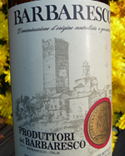 Produttori del Barbaresco, Barberesco, 2005 (about $33): I poured this wine the first day to illustrate tannins. While the taninns were actually more muted than I had anticipated, the wine was wildly popular. Many Nebbiolo fans were made from a sip of this wine. It does benefit from some air; another bottle that I bought was still going strong on day two.
Produttori del Barbaresco, Barberesco, 2005 (about $33): I poured this wine the first day to illustrate tannins. While the taninns were actually more muted than I had anticipated, the wine was wildly popular. Many Nebbiolo fans were made from a sip of this wine. It does benefit from some air; another bottle that I bought was still going strong on day two.
Domaine Guion, Cuvee Prestige, Bourgeuil, 2006 (about $12): After our discussion online about cabernet franc, the polarizing grape, I had to add this wine to the following lineup. All but four people really liked it (about 90% of participants); I love it too for the good acidity and interesting tannins and have been buying it by the case.
Ridge, Three Valleys, Sonoma (about $23)
This blend of mostly zinfandel fermented with natural yeasts has 13.8% alcohol, refreshingly low for a zin. The class really liked its lushness and didn’t find it as overextracted as some of the other wines. It’s also a good value, available online for less than I paid for the class.
Luzon, monastrell, Jumilla, 2008 (about $8): This wine was funny since it was the cheapest wine we tasted for the day, yet the most popular as people reached for their pens to scribble this one down. To me, it didn’t have a lot of individuality but certainly was not the worst example of monastrell I’ve ever had (ahem, Sierra Carche).
Search for these wines with wine-searcher
Sierra missed, parte dos! A blind tasting of Sierra Carche
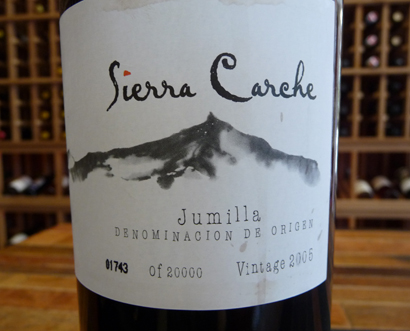
Remember the saga of Sierra Carche? Here’s a reminder from our earlier coverage: “What happens when a reviewer tastes a good bottle, but some consumers buy what appears to be a completely different product? Think it couldn’t happen? Guess again and behold the saga of Sierra Carche 2005.”
 Well, last week I met that consumer, Robert Kenney (right), whose dogged pursuit of Jay Miller popped the cork on this saga. Kenney purchased 48 bottles of Sierra Carche and has opened 18 of them, “hoping for a good one” but instead has found Jay Miller’s term “undrinkable” a more apt descriptor. I joined Kenney and a dozen other tasters for a blind tasting organized by Daniel Posner, a partner in the wine store, Grapes The Wine Co. in White Plains, NY.
Well, last week I met that consumer, Robert Kenney (right), whose dogged pursuit of Jay Miller popped the cork on this saga. Kenney purchased 48 bottles of Sierra Carche and has opened 18 of them, “hoping for a good one” but instead has found Jay Miller’s term “undrinkable” a more apt descriptor. I joined Kenney and a dozen other tasters for a blind tasting organized by Daniel Posner, a partner in the wine store, Grapes The Wine Co. in White Plains, NY.
Posner greeted the tasters in his apron as he pulled burgers off the grill outside the store. But his real work had happened well before the tasting even started, coordinating the lineup. He managed to find four bottles of Sierra Carche from two different lots of the wine (astute readers may recall mention of a third lot, #7033, but bottles from that small lot/bottling proved elusive). Posner selected similar wines, including wines rated 93 – 99 by Jay Miller at the Wine Advocate ranging in price from $6 to $150.
It was the worst tasting I have ever attended. Although the burgers and company were good, the wines were abysmal. I’ll spare you the play-by-play (if you want it, see Dale Williams’ funny account–I was sitting next to Dale). Suffice it to say, among the wines, there was one note that kept recurring: “Nasty, VA meets green pepper with a dash of jalepeno overlaying a bed of silage.” Other terms bandied about included burnt rubber, bacterial issues, fermenting/rotting hay, roadkill, and roadkill with burning rubber that ends up in a hog “lagoon.” Read more…
Sierra missed – the saga of Sierra Carche 2005
What happens when a reviewer tastes a good bottle, but some consumers buy what appears to be a completely different product? Think it couldn’t happen? Guess again and behold the saga of Sierra Carche 2005.
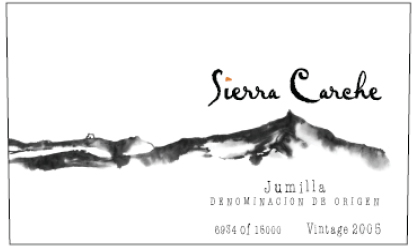
Last fall, Wine Library, the Springfield, New Jersey wine retailer, sent out an email offering for a wine that seemed to be the wine lover’s dream: a fantastic quality-to-price ratio. The wine on offer was the Sierra Carche 2005, a blend of Monastrell with Petit Verdot and Malbec from the off-the beaten path Spanish region of Jumilla. Jay Miller, a critic at the Wine Advocate, described it as “Inky purple, the wine offers an array of scents which jump from the glass… structured wine with gobs of flavor, terrific intensity… It will provide pleasure through 2025.” He awarded it 96 points. The suggested retail price was $40; Wine Library was offering it for $29.99. Robert Kenney, a New Jersey wine consumer, was so enthusiastic upon seeing the email that he ordered several six packs.
But Kenney’s euphoria turned sour as soon as he pulled a cork. He later wrote on the forums at erobertparker.com that “I have consumed 6 bottles already, praying that with each popped cork, a different genie will emerge…so far, no such luck…slapping 80 points on those bottles is generous.”
Kenney describes himself as an “unabashed fan of DrBigJ,” as Miller is known. But Kenney was so disappointed with the wine that he corresponded with Miller and FedExed Miller one of his bottles last fall for him to taste and “see if indeed it was indicative of the wine that he had tasted and scored highly.” Kenney wrote last week that “During a ten month period I had exchanged seven emails with DrBigJ, reminding/imploring him to taste the sent bottle…to no avail.”
Then a consumer in Pittsburgh, Bob Hudak, posted that he had found the wine for $38 at the PLCB, the state-run store in Pennsylvania. On July 5, Hudak wrote of his experience, “Considering that it was a Dr Big Jay 96 pointer in the WA, I figured I buy 6 bottles. I opened my first one this weekend. Big mistake. The wine had virtually no aroma at all. You couldn’t smell a darn thing. With time and air, some stinky aromas that were off-putting became noticeable.”
Kenney chimed in on the thread as did several other consumers with their negative experiences with the wine. (The wine’s scores on cellartracker.com were not all bad although several reviewers took the time to note flawed bottles and one gave it a 74 but the modal score was around 90.)
On July 14, Miller posted to the forum that he finally opened the bottle Kenney had sent him and declared it “undrinkable.” Miller contacted the importer of the wine, Mark Clinard of Well Oiled Wine Co., who replied, “We have had similar problems with this wine and had a meeting in March with the winery to find out what the problem is. There was clearly some substandard product shipped by the winery and we have had to take back a large chunk of this wine from the market because it was rejected by the trade. I apologize on behalf of the winery for this apparent bait and switch. Going forward we are searching for a different winery for this brand.” He posted his cell phone number and asked that those consumers with problems contact him.
Brandon Warnke, Vice President of Operations at Wine Library, posted that anyone who bought the wine through the store could return it to them for a full refund.
Jay Miller then wrote: “this is about the worst thing that can happen to a critic, to be tasted on a fraudulent wine, publish a note, and then have readers spend their good money on a fairly pricey wine only to find out that it’s plonk or worse. Its reminiscent of the furor over Las Rocas a few years ago that nearly killed that brand. It’s a bad situation all around.” Read more…
Nine wines under $10
The hardest thing—but perhaps more sought-after than a Lafite—is a list of good, interesting and affordable wines, for parties or for dinner Sunday to Thursday or even all week long. Here’s my latest list, arranged not by preference, but by style, from lightest to fullest in white and red.
Why is it only a list of nine wines under $10 instead of the usual ten under ten? Because I’m grumpy. It’s increasingly difficult to find good wines with character under ten dollars. Blame part of it on the weak dollar (though my list here is heavy on eurozone wines), blame it on producer greed–they’re all just excuses! Good wines, easy on the palate and on the wallet are what consumers want. Sure, there are lots of great wines for $12-$15 and many more from $15 – 20, but these are out of reach for a lot of people to have with dinner on a given Tuesday. Producers take note of this market opening, ready to be filled! Meanwhile, we can fill up our wine storage areas with this value vino.
Whites
 Muscadet Sur Lie, Hautes Noelles. $9.99 (find this wine)
Muscadet Sur Lie, Hautes Noelles. $9.99 (find this wine)
This muscadet is great for oysters. Don’t you get tired of people saying that? I do. I have oysters once every five years and this wine is too good to wait that long between bottles. The “sur lie” aging gives this muscadet a richer mouthfeel but it still has the characteristic crsip acidity, faint melon note, and gentle briney quality. Fire it up with grilled seafood on the deck. (Importer: H2Vino, Michael Skurnik)
Vina Sila, Naia, Verdejo, Rueda (Spain), 2005. $10 (find this wine)
This is a classic summer wine from a grape you may never have heard of: verdejo. Fresh citrus notes, though not as much acidity as a kiwi sauvignon blanc, notes of honeysuckle and white flowers make this wine a great one as a warm-up (with light, salty appetizers) or as a cool down (poolside).
Creta Olympias, Vilana, Crete 2006, $10. (find this wine)
Vilana is usually a ho-hum wine that is churned out from the most recent vintage. However, in a recent tasting of this off-the beaten-path variety, I found a few that were recommendable with this being the most affordable. With delicate white flower aromas, the wine had a certain lush mouthfeel, with pleasant minerally verve. This wine + Greek salad + outside under umbrella on a sunny day = life is good.
Rosé
Domaine Houchart, Cotes de Provence rose, 2006, $9. (find this wine)
This dark, vibrant, and dry rose has notes of strawberry and watermelon. The lively acidity makes it a great food pairing. While I think that rosé should be less than $10 a bottle to be lots of fun I might be tempted to pay $12 for the Domaine Sorin. But this blend of Grenache, Syrah, Cinsault, Cabernet Sauvignon, Mourvèdre gets the job done on the deck in the summer.
Reds
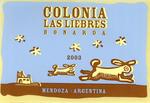 Bodegas las Hormigas, Colonia las Liebres, bonarda, Mendoza (Argentina). 2006. $4.49 (find this wine)
Bodegas las Hormigas, Colonia las Liebres, bonarda, Mendoza (Argentina). 2006. $4.49 (find this wine)
This ridiculously priced bargain is one to buy with both hands. This surprisingly light and lively, unfiltered old-vine bonarda from importer Marco de Grazia’s project in Mendoza. It’s now our house burrito wine.
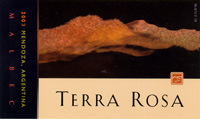 Terra Rosa, Malbec Mendoza (Argentina), 2004. $10 (find this wine)
Terra Rosa, Malbec Mendoza (Argentina), 2004. $10 (find this wine)
This is a fascinating wine of the global era: Patrick Campbell of Sonoma buys the fruit from local growers in Mendoza, makes the wine on location, then ships it back to California for bottling and an admirably reduced carbon footprint. The cost-savings results in a wine of character, with good fruit and a pleasant and unusual level of acidity, at a very reasonable price. It calls out for grilled meat.
Castaño, Hécula, monastrell, Yecla (Spain), 2004 $9. (find this wine)
I poured this wine recently at a tasting and people thought it was a $30 wine. It has the wonderful mourvedre game quality on the nose, and serious but not aggressive tannins on the finish. I actually came across a bottle of the 2001 of this wine in the Dr. Vino Cellar recently (originally purchased for $7—inflation!) and it was among the most rewarding $7 bottles of wine I have ever had. I’ll throw some more of this one in the cellar and check back in a few years. Try it now with game or sausage.
Castillo de Jumilla, monastrell, Yecla (Spain). 2006. $9. (find this wine)
Given what I just wrote about how I feel about young monastrell, I wasn’t planning on being wowed by this freshly squeezed 06. But I was. It’s a gobs-of-fruit, beef-drippings kind of wine but with a pleasing lushness. According to the wine’s importer, there are only a few hundred cases of this excellent BBQ companion wine available.
Trentadue, Old Patch Red, Sonoma, 2004, $8. (find this wine)
California Zinfandel has sadly seen prices escalate: consider this one greed relief. Fans of big reds will find this a gulpable bargain with hints of dark fruits and faint spice. The biggest plus here is that—unlike some of the other wines on this list—the wine has broader availability.
Reader mailbag: which wines for a BBQ on Mother’s Day?
Dear Dr. Vino,
 Which wine would you recommend for a Mother’s day barbecue?
Which wine would you recommend for a Mother’s day barbecue?
Thanks,
Erin
Dear Erin,
Hmm, that’s a tough one. When I think BBQ I think “big red” to go with the grilled meat. But “mom” and “big red” are not the first wine and people pairing that leaps to mind.
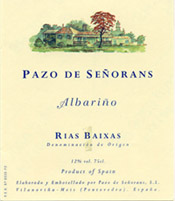 Since mom is the star of the show on Sunday, I’d check with her to see if she likes big reds. If not, I’d consider structuring the menu toward lighter fare such as grilled fish and vegetables.I’d try the Pazo de Senorans albarino 2005 from northwestern Spain. It’s a bit more expensive than entry-level albarino at $20 (find this wine) but it has a beautiful mouthfeel thanks to aging “on the lees” (dead yeast cells–don’t ask) to round out the minerality and acidity. It’s a great complement to grilled white fish.
Since mom is the star of the show on Sunday, I’d check with her to see if she likes big reds. If not, I’d consider structuring the menu toward lighter fare such as grilled fish and vegetables.I’d try the Pazo de Senorans albarino 2005 from northwestern Spain. It’s a bit more expensive than entry-level albarino at $20 (find this wine) but it has a beautiful mouthfeel thanks to aging “on the lees” (dead yeast cells–don’t ask) to round out the minerality and acidity. It’s a great complement to grilled white fish.
If you wanted to do some ginger grilled shrimp, I’d try some bubbly or faintly spicy gewurztraminer. On the bubbly side, you could go for the value play with the wonderful, dry Bisol “crede” prosecco for $15 (find this wine) or pay a bit more for the Falmet brut Champagne, a full-bodied bottle of champers thanks to being 90 percent from pinot noir and pinot meunier. For a gewurz, I’d try the Zind-Humbrecht to really hit a home run (find this wine).
If your mom likes reds and grilled meats, then I’d try a mencia from Bierzo for around $12. At that price point the wines are unoaked and lots of food friendly acidity and fruit. Try the Peique (find this wine–or the Abad dom Bueno). For a lush red, try the Terra Rosa malbec for $12 (find this wine) or the Castillo de Jumilla monastrell for same price (find this wine). I had an excellent Gigondas recently, the 01 Domaine Le Mas des Collines Regis de Taxis, for about $21 that would be great with heartier grilled meats (find this wine). If you really wanted to splurge, go for the Ridge Lytton Springs zin (find this wine) to leave your relatives and mom with a lasting impression.
Fingers crossed for good weather on Sunday!
Cheers,
Mourvedre: the next big red?
A dozen intrepid tasters gathered at the Dr. Vino World Headquarters on Saturday to answer two pressing questions: (1) is mourvedre the next grape “for men†and (2) if we see more of it thanks to global warming, is that a good thing?
The two questions are interrelated. Because mourvedre (minus one for machismo—French name) has a long hang time (plus one!) it can produce powerful red wines (plus two!) that are high in alcohol (plus three!).
Further, the late bud break and late ripening mean that it does well in warmer climates, such as its ancestral homeland, Spain. The grape has grown so well in Provence that the appellation Bandol mandates that all reds must have at least 50 percent mourvedre. As the world heats up, are we going to see more mourvedre?
Mourvedre is popping up around the world. Originally named after the Spanish town of Murviedro, it came to cover much of southern France. In the late 19th century when phylloxera devasted vineyards, mourvedre lost out since it was difficult to graft, the successful remedy against the louse. Only in the last 50 years was mourvedre able to be grafted and as a result it has swung back into favor though it still lags the other big reds.
It is often blended with grenache and syrah in the Southern Rhone. Chateau de Beaucastel has had as much as 70 percent mourvedre in the blend. Known for giving brambly, rustic, gamey or animal aromas it can take a wine to the wild side. Australia also makes blends known as “GSM†after the three grape varieties although I found it hard to locate one with a significant amount of M.
The best wines from mourvedre are known to improve mightily with age. So I wanted to be sure to include some with age as well as from various growing areas. And it tends to be good in its inexpensive incarnation from Spain, so I wanted to include a few of those too.
I bought ten wines that were mostly mourvedre—or monastrell as it is known in Spain or mataro as it is known in California. Seven of our wines are currently available on the market. One, the Castano Solanera 2001 had been in my cellar for the past couple of years since I purchased it for about $10. The two others, the Tempier and the Ridge, I purchased from Hart Davis Hart in Chicago.
They came from Spain (5), California (3), Washington State (1), and France (1). I bagged them that morning so the tasting would be free of prejudice.
The tasting (in my order of preference)
Ridge, Mataro, Evangelo Vineyard, ATP, 1993. $25 find this wine
An excellent example of aging gracefully. Soft and delicate tannins, notes of forest floor, brambles, dust, leather and some tart cherry, this bottle was quickly emptied. With only seven barrels made, this was a small production that is now out of production.
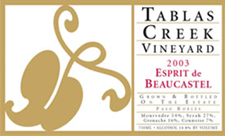 Tablas Creek, Esprit de Beaucastel, Paso Robles, 2003. $38 find this wine
Tablas Creek, Esprit de Beaucastel, Paso Robles, 2003. $38 find this wine
Wonderfully balanced with notes of earthy rusticity. The luscious black fruits, supple tannins, and mouth-filling charm with layers of complexity including faint clove, briars, and sage made this my favorite of the young wines. 50 percent mourvedre.
Rafael Cambra, Valencia, 2003. $30 find this wine
Modern in style, this wine exhibits the intensity of the grape in its youth: a slight minerality and acidity followed by solid but fun tannins from the oak as well as the grape. This one could do with 3-5 years in the cellar.
Castaño Solanera, Yecla, 2001. $10 find this wine
Although this wine had a couple of years of age on it, the tannins were still serious. But they made it seem more grown up. Sadly, a second bottle opened after the tasting was corked.
Juan Gil, Jumilla, 2003. $15 find this wine
This highly praised wine from importer Jorge Ordonez is fun and approachable with big concentration and supple tannins and notes of dark fruit, bacon fat, and vanilla. Many tasters enjoyed it, as did I. But I couldn’t help wondering if, in the future, if it wouldn’t be just a tad dull? Still it was the best performer of the currently available under $15 group.
Domaine Tempier, La Migoua, Bandol, 1998. $35 find this wine
Still very dark in color, this single vineyard Tempier with eight years of age was a disappointment. It exhibited musty, skunky notes with licorice and fatigue. I tried it again after the unveiling. A half a bottle remained at the end of the evening.
McCrea, Mourvedre, Red Mountain, Washington State, 2003. $13/375ml find this wine
Bottled in clear glass, the wine has a bright, Jolly Rancher color. It was a prelude to a taste: odd sweetness permeated the wine. Well made and improved with some of the cheeses, but oddly sweet finish remained.
Casa Castillo, Jumilla, 2004. $11 find this wine
No great complexity, no tannic backbone left me thinking, “eh.â€
Luzon, Jumilla, 2005. $7 find this wine
With the previous vintage receiving huge praise (although my experience was one good one bad), I had thought that this would be a ringer. Unfortunately it was not to be. There was an odd mustiness that would not blow off, bright berry up front and oak that was not well integrated.
Garretson, mourvedre, “la graosta,†Paso Robles 2004. $30 find this wine
This 100 percent mourvedre had odd notes of sea salt and sulfur that took a while to blow off. Bright cherry and wet dog notes also present. Perhaps blend in some grenache or syrah? The alcohol too was perceptible with 14.8 percent on the label.
Returning to our two questions, mourvedre may not be too manly since men and women enjoyed the wines equally. And if we do see more of it in an era of global warming, it is able to produce exciting wines, particularly when blended with the fruitiness of grenache and the spiciness of syrah. On its own, a great site and top winemaking skills appear needed to make a good one. If game or fowl is on your plate this fall, try matching it to a mourvedre in the glass.
Value vino list eighteen
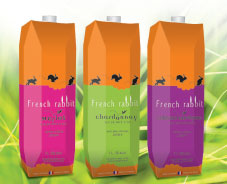 French Rabbit, Pinot Noir 2004. $10 – 1 liter box Find this wine
French Rabbit, Pinot Noir 2004. $10 – 1 liter box Find this wine
Sacre bleu—French innovation! Many commentators attribute the current state of malaise in the French wine industry to a lack of innovation and bad labels. This one-liter box should silence the critics. Bright orange, English language, and critter label (well, that’s not the original part) all in packaging that will stand out on the shelf and weighs a fraction of glass. But what about what’s inside? Well, you won’t mistake it for Gevrey-Chambertin, but at least it is 100 percent pinot noir unlike many similarly priced California wines. It’s fruit forward and soft tannins—in other words a great red for the summer picnic basket. And you won’t even have to remember the corkscrew. Importer: Boisset America.
Commanderie de Peyrassol, Coteaux de Provence, rosé, 2005 $13 find this wine
The other day I had a rosé and it was no fun. Rosé is supposed to be fun. Besides the truncated flavor range, the price made it a further downer: $30. Yikes–talk about a buzzkill! So I was thrilled when, a few days later, I had this Peyrassol. Made by a mother-son duo in the hills of Provence, this wine from syrah, grenache and cinsault offers pale colors but alluring blend of rose petals and strawberry aromas give way to refreshing crisp acidity. Just what you need on the deck in Provence–in fact, a deck anywhere. Try this very food friendly with a range or foods from fish to spicy dishes. Shop around so that you don’t over-peyrassol. Importer: Neal Rosenthal.
Pascual Toso, Mendoza, Malbec reserve 2004. $13 find this wine
On my recent trip to Argentina, the jovial Ernesto Toso picked me up in his beat-up sedan and drove me from downtown Mendoza to his family winery in the Barrancas area, about 45 minutes. Overlooking a dry river bed that had channeled into the ground like a miniature Grand Canyon, I tasted the line of wines made at the winery with Paul Hobbs from Sonoma, California as consulting winemaker. The real sweet spot in terms of quality to price was the Malbec reserve with wonderful aromas of dark fruits and a hint of vanilla to complement a luscious mouthfeel and soft tannins. The straight malbec (about $8) is a good approximation but spring for the reserve if your budget permits. Fire up the grill and pull the cork! I also tried the $100 Magdalena 2002 (find this wine), which was no doubt a powerful and serious wine but at that lofty price point I couldn’t help but think about other wines I could have—or even nine bottles of the malbec reserve. Importer: TGIC imports.
Sorbus, cabernet/malbec, Mendoza, 2004. $6 find this wine
The other day a friend poured me some $6 Borsao, a wine that I discovered several years ago as a go-to value. Well, move over Borsao, here comes something meatier. A phenomenal value, this Sorbus displays the depth that a cab-malbec blend can give and has that same, crowd pleasing “ah” of the Ruca Malen Yauquen. I found it at PJ’s Wine in Manhattan for the bargain price of $5.97. This is one to buy by the case! Importer: Mediterranean Wine Co, Dover, NJ.
Lucien Albrecht, Alsace, pinot blanc, Cuvee Balthazar 2005. $8 find this wine
Pinot blanc is the other, other pinot. It’s not pinot noir. And its not even pinot gris/grigio. But it is worth checking out from this Alsatian producer. The light floral notes in this aromatic white are balanced with the crisp acidity somehow seem to make it a good choice for a mother’s day brunch, one heavier on savory than sweet. Or it is great with a salad or hors d’oeuvres. Whatever you pair it with, it does pay to shop around since I found a range of $8 – $16 for it through online vendors for the previous vintage. Importer: Pasternack, Harrison NY.
Veramonte, Cabernet Sauvignon, 2003 $8 find this wine
That Chile can compete on price the world has known for a decade or more. But quality is increasing as well and when the two intersect, the result is something like this Veramonte. From Augustin Huneeus’ vast vineyard in the Casablanca valley comes this Cab that you will want to buy in bulk for the BBQ this summer. The wine is widely available and has a lot of varietal character thumping soulless shiraz on neighboring shelves into submission. Franciscan Estates, importer.
Ruca Malen, Yaoquen, Cabernet Sauvignon/Malbec,
2004 $9 (find this wine)
When I greeted Mrs. Vino with a glass of this wine after she came home at the end of a long day last week she took a sip and said, “delicious!” I couldn’t have said it better myself. This blend of Cab and Malbec hit the high points of the flavor arc (more on that here) for a low price tag. Inky purple in color, with blackcurrant and violets in the aromas, this lush and velvety wine is a guaranteed crowd pleaser whether outside by the grill or inside at the table. But you’ll be laughing all the way to the bank since it is such a steal. Importer: Domaine Select Wine Estates, NY, NY.
Alta Vista Torrontes, Mendoza, 2004 $9 (find this wine)
The best white wine that I had on my recent trip to Argentina I had on the first day at Cabaña Las Lilas restaurant in the hip Puerto Madera area of Buenos Aires: Alta Vista Torrontes. And it kept popping up on the trip as I tasted it two more times (including at the winery with the 05) and loved it each time. “Aromatic” is a way that Torrontes frequently gets described but perfumed might be more accurate. White peach, honeysuckle blossom, perhaps even lychee conspire in an hugely rich and expressive aroma that is not for the faint of heart. The wine has crisp acidity and is totally dry (2g residual sugar) despite the vortex of aromas. While this wine is a little bit hard to find in the US, an able substitute is the Santa Julia Torrontes, which has wider availability (Whole Foods) can be found for as low as $6. Pair with Asian foods or try it as an aperitif. Either way, a torrent of flavor will be yours!
| Pepiere Muscadet 2004 $11. Find this wine Marc Ollivier poured me a taste of this Muscadet a few days ago and after giving it the old swirl, sniff and taste, I cocked an eyebrow and looked at the price sheet. Whoa! I cocked two eyebrows! This crisp, tangy Muscadet was so refreshing and vibrant that it made me want to have grilled fish—and right away. The secret to the success in the glass comes not only from the vineyard but also from the winemaking: Ollivier leaves his wine on the lees right until his late bottling in May. This makes it more smooth and complex than the average Muscadet and a great wine for a midweek dinner. Importer: Louis/Dressner (NY). |  Marc Ollivier, the man behind the Muscadet |
Luzon Verde Jumilla 2004. $7. Find this wine
Verde in this case does not mean young—as with the Luzon and the Luzon Alto, this is more old-vine deliciousness from Spain. Verde here means organic complete with an image of a whimsical grass cutter on the back label. This old vine monastrell (mourvedre) is a jammy yet balanced glass that will thrill fans of big reds—especially when they learn the price! Importer: Jorge Ordonez, Dedham, MA.
See previous list of value vino




